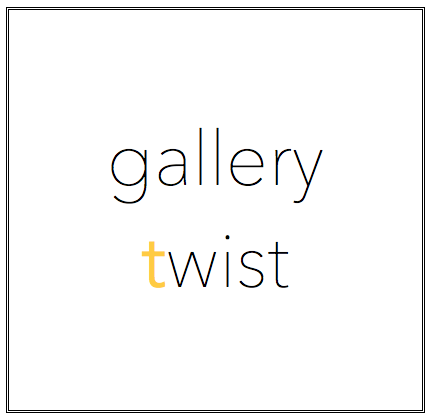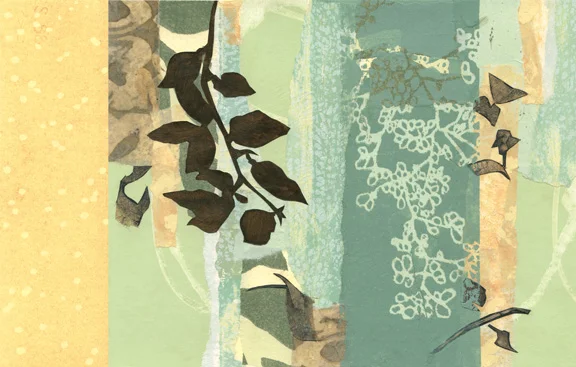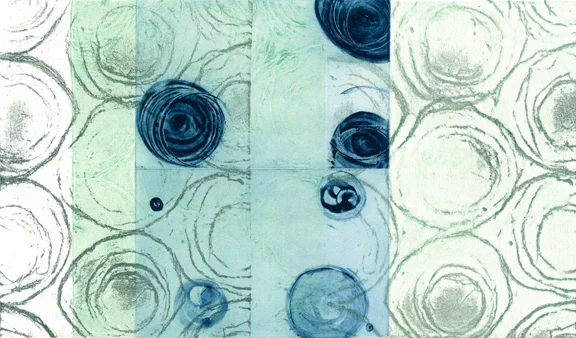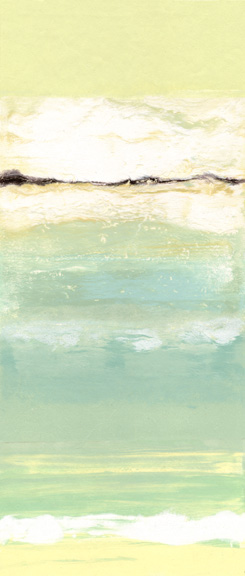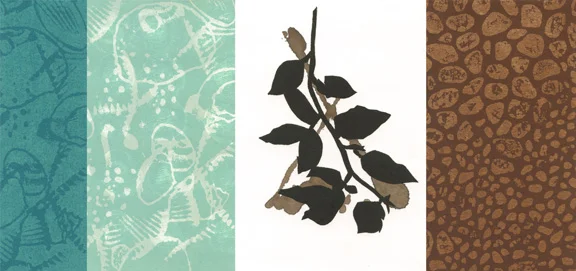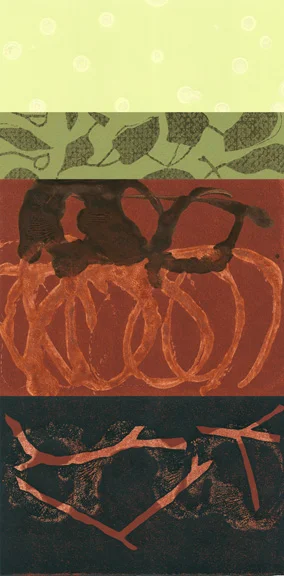BONNIE MINEO
CLICK ANY IMAGE FOR SLIDESHOW
BIO AND ARTIST STATEMENT BELOW
“My work is about discovery and the translation of experience through printmaking and painting. The ocean series explores the colors and textures of water, beach and sky. Seaweed, in all its variations, has entered the work with shapes and colors from the ocean garden as the tide brings new colorful plants to the shore.
Many of my images are inspired by my hikes and river trips to the Southwest,
using the palette of colors and details of the “desert next to the river” landscape. A 17-day raft trip on the Colorado River through the Grand Canyon with its colorful desert landscape and ravens continues to give me rich subject matter.
Back in my studio, I create impressions of my “experience of place” to communicate a range of sensory responses to the colors and shapes observed in the natural environment. The work also becomes a journey, unpredictable, taking on a tactile illusive quality searching for the quiet reflection of a moment in time.”
Bonnie received a BFA from the School of the Museum of Fine Arts in affiliation with Tufts University and completed additional painting and printmaking intensives in the Diploma Program. Previous to attending the Museum School, she worked in graphic design for over 20 years including co-owner and principal designer of the firm PORTFOLIO in Boston. Since 1999, she has worked in her studio in Boston’s Fort Point neighborhood in a vibrant artist cooperative building. For many years she has taught workshops in Relief Printmaking and Contemporary Collage & Mixed Media and her current workshops are all in her Boston studio. Her work, including site specific commissions, can be found in private collections. Bonnie's prints are one-of-a-kind works or monoprints made with polystyrene plates and water-soluble inks. The plates are cut or marked, inked with a brayer, and transferred one at a time to paper by hand without a press. The textured images are created through layering transparent and opaque inks. This process is suitable for a series of related unique prints, which can happen through planning ahead or random overprinting of plate on plate.
